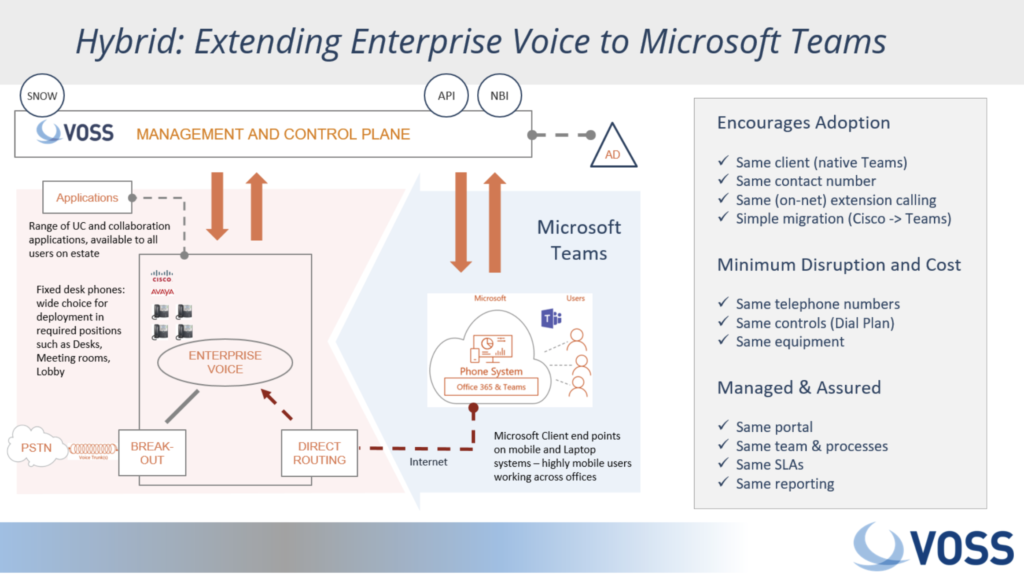Merging enterprise voice telephony with your Microsoft Teams platform is one of the most complex issues that organisations are currently facing, and as flexible working looks set to be the de facto model going forward, it’s a challenge that needs a long-term solution.
Tim Jalland, Solution Manager at VOSS Solutions, told UC Today that the value of enterprise voice integration cannot be underestimated. It offers a practicality in allowing employees to contact and collaborate with who they need to, regardless of whether they are internal or external to the organisation.
“Employees who use the Microsoft Teams platform day in and day out, want to use the same tool for their telephony voice requirements,” he explained.
“It allows employees to be more productive, but it also means the organisation doesn’t have to invest in and run separate platforms and systems over the longer term.”
When it comes to integrating voice capabilities onto the collaboration platform, there are several pitfalls that IT managers should look out for.
One is inadvertently creating an “island” when migrating departments onto the solution, meaning that teams who do not yet have the solution cannot communicate with their colleagues elsewhere in the organisation who do.
“You need to be careful that when you’re moving people onto enterprise voice within the organisation that they don’t become an island, that is people using Teams for telephony who can’t be contacted by people that are not on Teams yet, and vice versa,” he elaborated.
“You need to be careful you don’t subdivide your organisation into different islands with some people using Teams and some not, meaning they can’t communicate with each other”
If islands are created in an organisation this can lead to another problem: extra and unwanted costs. If an employee makes a call to another in an island, that call may well be made on the public network which can incur unnecessary costs.
Another potential problem to watch out for is that of retaining current phone numbers, said Jalland, adding that organisations should strive to keep their phone numbers because if they adopt new numbers it can lead to reduced efficiency.
“If you re-number, it can drive up training and communication costs and delays the rollout within an organisation. If you move numbers, that adds unnecessary risk, complexity, and delays on the project,” he warned.
Finally, organisations need to tread carefully in making wholesale changes in launching a new enterprise voice platform, leading to similar wholesale changes in business and operating processes, supporting systems and tools, and training.

What are the Options Available?
There are a few ways enterprises can integrate telephony into their Teams platform. Calling plans (also available as Business Voice) are available from Microsoft as an out-of-the-box solution, but are expensive and are limited to a certain number of countries, which isn’t ideal for a global organisation.
Direct Routing (a technology from Microsoft) is a popular choice for many companies. However, in its basic configuration it operates as an island and doesn’t offer easy integration with existing systems, nor does it easily enable the migration of users to Teams.
According to Jalland, the best approach for enterprise voice integration is a hybrid one which offers the “best of both worlds”.
This hybrid approach that VOSS offers integrates the Microsoft Teams solution directly into a customers’ existing enterprise voice platform, providing a single, unified solution.
It builds on Direct Routing by allowing users to easily communicate between any endpoint using either internal extension dialling or through their contact card. Calls are kept on-net to avoid unnecessary charges.
This approach also allows users to retain their individual handsets alongside Teams, and dial plan controls can be reused to provide consistent dialling. Migration workflows ensure a seamless transition from the existing voice platform to Teams without major disruption.
To find out more about VOSS and how to manage your enterprise voice integration with Microsoft Teams, click here.







